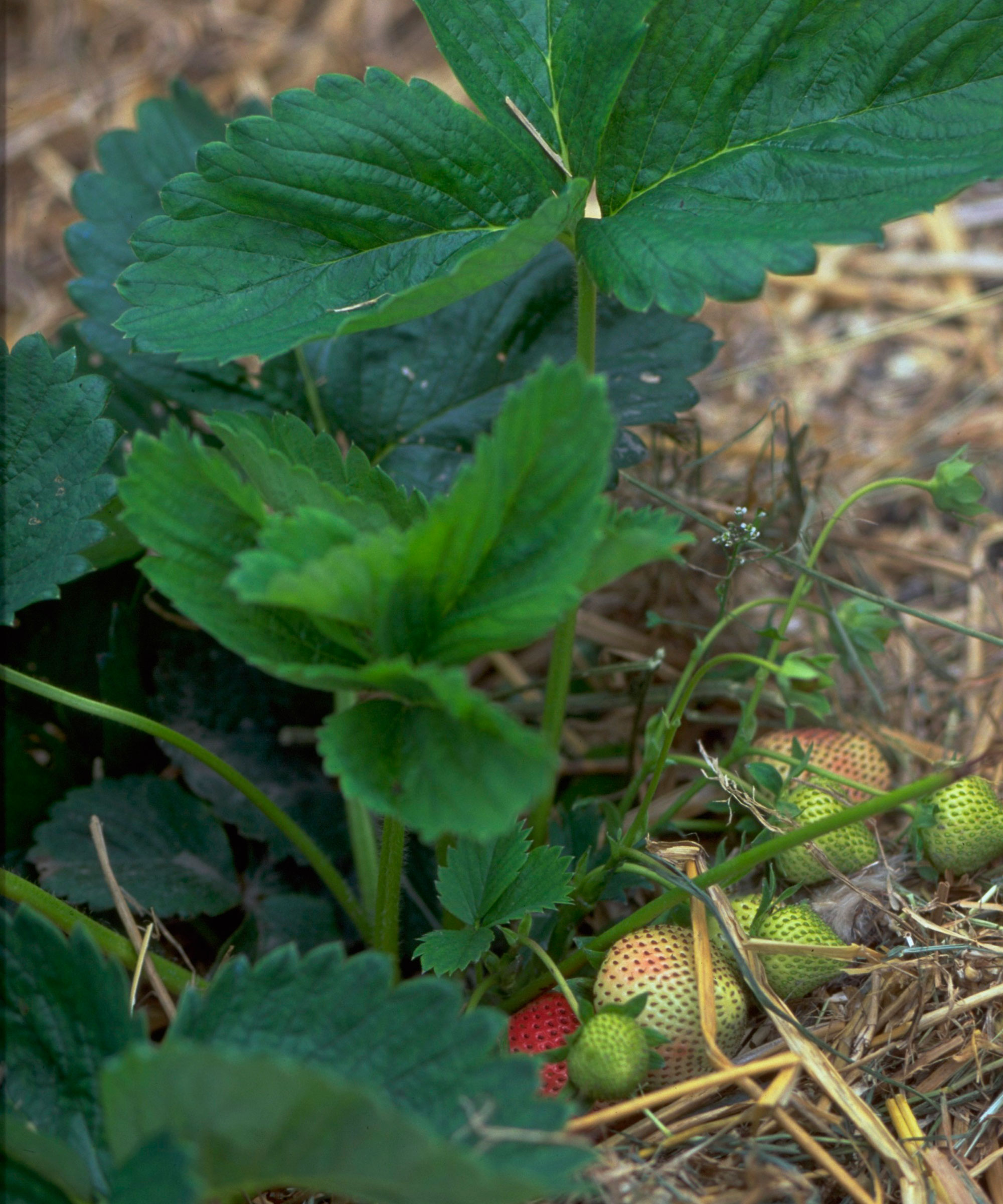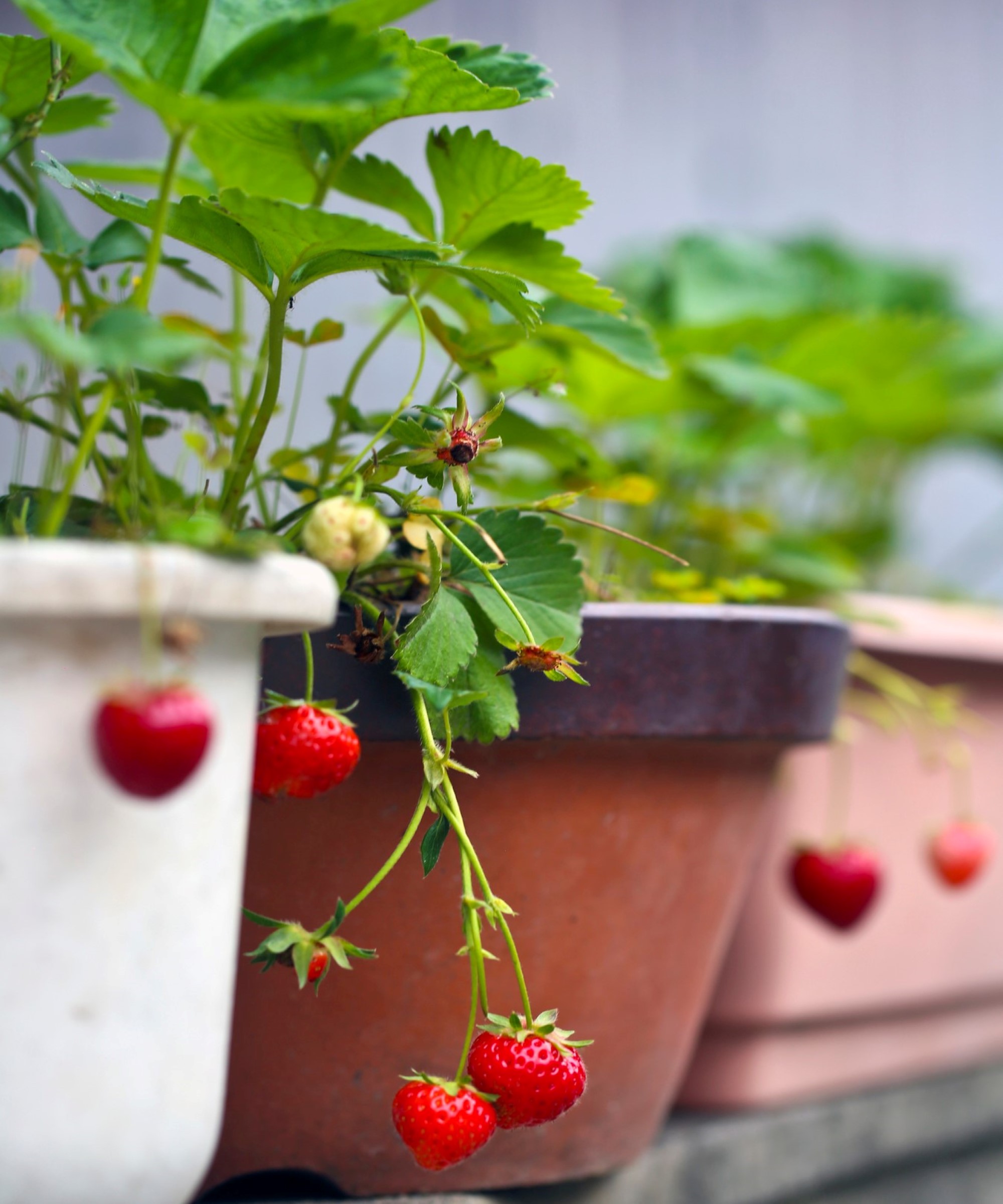When should you fertilize strawberries? Experts reveal the best time of year for this task
Find out how and when to fertilize strawberries to get the perfect crop of juicy fruit in summer

Knowing when to fertilize strawberries will maximize your strawberry crop next year. Strawberries can be a fickle fruit to grow, with exacting requirements for moisture and sunlight levels. Anyone who's ever tried growing them will know that a summer that's either too hot or too rainy is likely to jeopardize your strawberry harvest. Fortunately, most of us living in temperate climate zones will be able to enjoy our strawberries most years, even when the weather is a little uncertain.
However, when learning how to grow strawberries it's also important to remember to fertilize them. Do it at the right time of year and with a good-quality fertilizer, and you are that much more likely to enjoy a bumper crop of sweet strawberries come early summer.

Learn when to fertilize strawberries to get the best results
The best times of year to fertilize strawberries are early spring and late fall. Lindsey Hyland, a gardening expert and the founder of Urban Organic Yield, says that 'in the early spring, the soil is still cool and will provide good conditions for the fertilizer to be taken up by the plant's roots. In late fall, the plants are entering their winter dormancy period and will take up any nutrients that are applied then. Applying fertilizer at these times will ensure that your plants get the most benefit from it.'
However, Miguel Palma, a professional gardener and owner of JardinTienda, explains that the best time to fertilize your strawberries will 'sometimes depend on where you live'.
You don't need to worry about different varieties, as all strawberry plants go dormant when the weather gets cold. All you really need to keep track of is fertilizing your strawberries at some point before they begin their next life cycle. So, fertilize either after they've finished fruiting, or after the cold season before they've begun flowering.
Winterizing strawberry plants can also be effective for ensuring you get a healthy crop of fruits the following year.

How do you fertilize strawberries?
Jen Stark, the founder of Happy DIY Home, a master gardener and home improvement expert, recommends the following method for fertilizing strawberries.
- Apply a balanced fertilizer to the soil around your strawberry plants before new growth begins in spring. Use a fertilizer with a proper NPK (nitrogen, phosphorous and potassium) ratio (see below for more details on this).
- Water the fertilizer into the ground to prevent burning the roots of your plants.
- Repeat this process again after the strawberries have finished blooming and fruiting.
- When fertilizing plants, avoid getting it on the leaves as this can burn them too. Be careful not to over-fertilize your strawberry plants, as this can lead to an unproductive and unhealthy plant.

What fertilizer is best for strawberries?
Jen Stark explains that strawberry fertilizer is 'carefully prepared with the proper NPK ratio. That's nitrogen (N) for foliage, phosphorus (P) for root development, and potassium (K) for fruiting. Your plants will produce more fruit and are more disease resistant if fed consistently with the appropriate combination.'
Avoid using a fertilizer with too much nitrogen, 'as this can promote leaf growth at the expense of fruit production. The most effective fertilizer will be one that is high in potash. You can also use organic fertilizers, such as compost or manure.'
High-quality strawberry fertilizer can be bought on Amazon.
Anna writes about interior design and gardening. Her work has appeared in Homes & Gardens, Livingetc, and many other publications. She is an experienced outdoor and indoor gardener and has a passion for growing roses and Japanese maples in her outside space.
